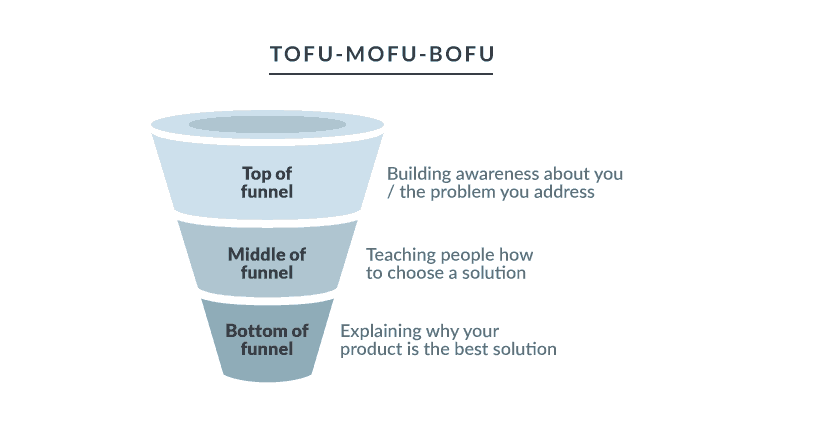Lead generation is one of the most important processes in the world of digital marketing, but making users convert into leads for your business is not an easy thing. Truth be told, only 22% of businesses are satisfied with their conversion rates.
The reason behind such discontent among entrepreneurs is the fact that they have adopted an ineffective lead generation strategy. They may have created an inconsistent lead generation funnel or haven’t even bothered to create one.
Frankly speaking, building an effective lead gen funnel is indisputably the best strategy to significantly boost conversions and make your business thrive.
Make your sections smartable and let go of mundane manual tasks with Smart Sections! An easy way to manage bulk changes.
What is a lead generation funnel
Lead generation funnel refers to a process of sales and generating leads by sifting through a significant number of prospects at the beginning, determining which of these names are probable to become sales leads, and then converting the promising ones into customers.
Understanding the lead generation funnel is essential for marketers to move contacts gathered through marketing activities effectively and build a relationship with them in a smooth manner.
How to create an effective lead gen funnel
Poor lead gen funnel performance is usually a consequence of improper funnel creation. In order to create one that serves its purpose, you need to take the following steps:
- create customer personas,
- define your lead magnets,
- define the customer journey,
- create a landing page,
- create lead generation funnel,
- capture leads.
Step #1: Creating customer personas
Customer persona is a representation of your model customer based on the real data about your existing customer base and solid market research.
Once you understand your customer personas, you are able to effectively target and personalize your marketing campaigns for different segments of your audience. It will allow you to improve the quality of your marketing communication.
In order to create customer personas, you can take into consideration demographic data, motivations and concerns, purchasing habits, hobbies or interests of your customers.
For example, say you have a customer persona named Karen. Karen may be a 40-year-old woman who doesn’t have a Facebook account and uses emails a lot. She surfs the Web for beauty-related sites. Once you define Karen as a customer persona, you can customize your marketing actions. With Karen, you would focus your efforts primarily on email marketing and trying to create more beauty-related content.
Step #2: Defining lead magnets
Lead magnets are incentives that marketers or business owners offer to potential customers in exchange for their email addresses or other personal information. They assist in increasing conversions as visitors are easily enticed by a promise of getting something for free.
Not only do lead magnets give you an opportunity to get an insight into your audience but they also help your potential clients familiarize themselves with your business better. This information exchange inspires trust and allows your brand to grow.
A high-quality lead magnet should:
- solve a real problem,
- be specific (when it comes to the content),
- consist of meaningful content,
- be easily and quickly delivered.
There is an endless number of possibilities when it comes to lead magnets and you should create one that would be relevant to your target audience and would provide them with value.

Lead magnets may offer pieces of digital downloadable content like free ebooks, PDF checklists, widgets, quizzes, live demos, video, or free coupons.
Step #3: Defining the customer journey
A customer journey is basically the complete set of experiences that customers go through while interacting with your brand and company. It encompasses the full experience of being a client.
You can map out the customer journey through diagrams or a list of scenarios that customers may encounter at every stage of their journey.
Think where your customers first come into contact with your business, what are the pivotal points in the journey, how and where they may convert and how you can nurture the relationship with them. You should take into consideration how each stage of the journey affects the relationship and transactions.
The difficulty in defining the customer journey is the fact that it is not linear and may be slightly different for every customer persona.
Nevertheless, it is important to reflect well on the customer journey as it will, more or less, impact on the lead generation funnel.
Step #4: Creating the landing page
An awesome landing page tailored to your business and goal will assist you in boosting conversions. In order to make it visually stunning and powerful, you should take advantage of a high-quality landing page builder like Landingi.
When it comes to landing pages, you should always keep in mind that one landing page = one goal. If you are in the process of creating a lead generation funnel, don’t try to put an attractive offer in the sidebar to try to kill two birds with one stone.
You need to have your visitors focused on one action in order to make your landing page effective and not distract them.
Step #5: Creating a lead generation funnel
As already mentioned, your lead generation funnel will be based upon the customer journey.
Basically, a lead generation funnel consists of 3 stages:
- TOFU – awareness,
- MOFU – consideration,
- BOFU – decision.

TOFU
In the TOFU phase, you should primarily focus on educational content (meaningful blog articles, compelling social media posts) and using a lead magnet. It will increase the awareness of your offer and make users interested. Since visitors have come across your business for the first time, you need to create a message that helps them understand the value that comes with your solution.
MOFU
Moving on to the MOFU stage – potential customers are already familiar with your brand or business but not everyone is ready to make a purchasing decision yet. The MOFU serves as a bridge between the initial contact and the final stage.
In many cases, MOFU turns out to be the lengthiest stage as it may require a significant amount of time to build and nurture fresh relationships with customers. The goal is to steer prospects through the customer journey. You can accomplish it by building brand loyalty providing business insights, email marketing campaigns, tailored reports, ebooks, webinars or case studies.
BOFU
The last stage of the funnel is where you should highlight your value proposition and finally convince your prospect that you are the best choice for them.
In the BOFU, you should primarily center your efforts around acting upon customers’ intent to purchase in order to close the sales. The most effective tools you can take advantage of are demos, free trials, or third-party reviews.
Step #6 Capturing leads
Creating an effective lead generation sales funnel is crucial in order to fully capitalize on the content you have created. In order to generate great results from your capturing efforts, you need to understand the critical components of the product or service you want to sell, the message you are sending out to prospects, and the channel where all engagement will take place.
The idea is to initialize your relationship with leads, gain their trust, gradually familiarize them with your offer, and finally make them your customers.

Why do you need a lead generation marketing funnel?
Creating a lead generation funnel will not only assist you in increasing sales but also in optimizing your marketing campaigns. The funnel is the best opportunity to get to know your prospects. It allows you to profoundly understand their needs, tailor your offer accordingly, and improve business performance.
Lead generation funnel is a highly effective and cost-effective method that will generate valuable traffic to your sites and allow you to easily turn visitors into customers for your business. It is based on building relationships with customers rather than hard-selling and it turns out to be the most effective way of winning customers these days.
As you can see, lead generation funnel is a state-of-the-art and powerful strategy that allows you to provide your target audience with products and services of the highest quality and build strong relationships with them. Once you understand the lead generation ecosystem, you’ll be able to create a flowing funnel that will take your business to the next level.








